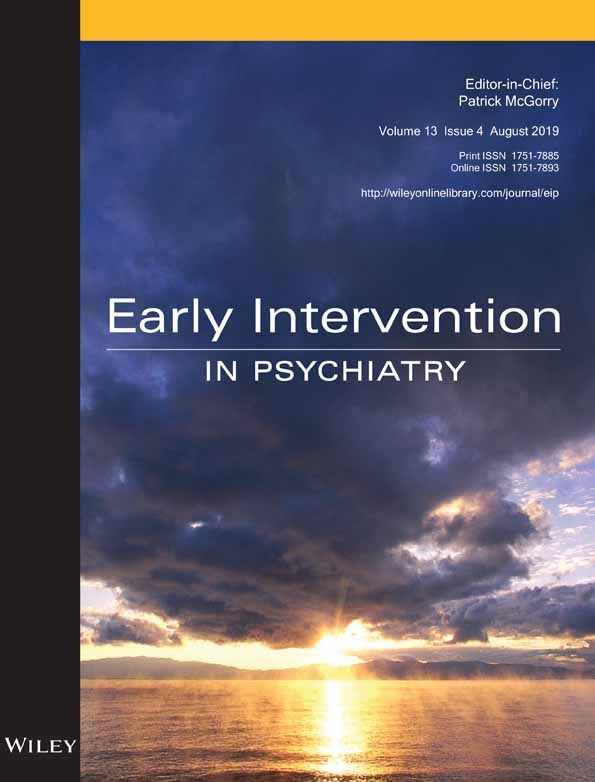Potentially traumatic events in youth with and at clinical high risk for psychosis
Abstract
Aim
Previous research has demonstrated a strong association between early trauma exposure and the development of psychotic symptoms. However, few of these studies have included young adolescents and children. This study investigated rates and number of potentially traumatic experiences (PTEs) among typically developing youth (TD; n = 21), youth at clinical high risk for psychosis (CHR; n = 38), and youth with a psychotic disorder (PD; n = 28) between 7 and 18 years of age. CHR participants were further evaluated to determine whether a history of PTEs was associated with prodromal symptom severity.
Methods
Study group inclusion was determined by structured interviews. Trauma history was assessed using the post-traumatic stress disorder module of the Schedule for Affective Disorders and Schizophrenia for School-Age Children—Present and Lifetime Version. CHR participants with vs without a history of PTEs were compared on severity of prodromal symptoms.
Results
CHR and PD participants reported significantly higher rates and numbers of PTEs than TD participants. Contrary to expectations and prior research, CHR participants with vs without a history of PTEs did not differ in prodromal symptom severity. Explanations and implications for the findings are discussed.
Conclusions
These findings suggest that the relationship between trauma and the development of psychotic symptoms extends to children and adolescents as young as 7 years of age. This study underscores the importance of screening for trauma exposure among youth seeking treatment for psychotic symptoms.




